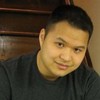Image: Carleton College Yearbook, 1972. From left to right, Don Rawitsch, Bill Heinemann, Paul Dillenberger
Image: An example of a teletypewriter. The Teletype Corporation, Model 37, 1968
Image: Minnesota Educational Computing Consortium, 1977. Part of a flowchart for MECC's original timeshare version. Much of the original 1971 game, which has been lost, carried over to this version.
Image: Minnesota Educational Computing Consortium, 1977. Part of a sample run for MECC's original timeshare version. Much of the original 1971 game, which has been lost, carried over to this version.
Image: Don Rawitsch. The original creators at the 20th Anniversary celebration (MECC version), Mall of America, 1995. From left to right, Don Rawitsch, Bill Heinemann (holding the original game code written in BASIC), Paul Dillenberger
